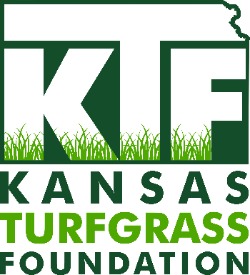Broadleaf Weeds- Chemical Control
Some of the most common and obvious invaders of turfgrasses are broadleaf weeds. These plants are undesirable because the leaves, stems, and/or flowers of these plants impact turf uniformity. In addition, some of these weeds commonly occur in athletic settings and reduce the playability of the turf. Finally, these weeds are competitors with turf for water, mineral, and light. Fortunately, broadleaf weeds are among some of the more easily controlled pests of turf.
Always use proper culture as the first line of defense against broadleaf weeds in turf. Turf that is properly established, mowed, irrigated, fertilized, and cultivated will usually be more dense and healthy and contain fewer weeds than poorly maintained turf. If weeds continue to be troublesome, use postemergence herbicides to control growing weeds and preemergence herbicides to control weeds before they emerge.
Using Postemergence Broadleaf Herbicides
When using any chemical pest control, be sure to read, understand, and follow the label directions for proper use of these chemicals. If mishandled or misapplied, postemergence broadleaf herbicides may damage or kill many desirable ornamental or edible plants in the landscape. Follow these general recommendations when using postemergence broadleaf products.
- Apply postemergence broadleaf herbicides when weeds are young and actively growing.
- Avoid applications when weeds are heat or drought stressed. This may interfere with herbicide uptake or translocation.
- Don't mow for a few days before application or following application. This allows maximum leaf surface for interception and absorption of herbicides.
- Do not apply these herbicides to newly seeded turfgrasses until they have been mowed three or four times. Wait at least 30 days following application before seeding into areas treated with postemergence broadleaf herbicides.
- Apply postemergence broadleaf herbicides when environmental conditions are appropriate for control.
- Watch wind speeds to avoid drift. Often, early mornings are more still than later in the day.
- Do not apply these herbicides when air temperatures will exceed 85°F.
- Adequate soil moisture is important to maintain growth and translocation of herbicide throughout entire weed.
- Do not apply when precipitation is expected within 24 hours. Don't irrigate turf for several days following application.
- Be especially cautious of ester formulations as air temperatures rise. Ester-formulated broadleaf herbicides are more prone to volatilization than amine-formulated herbicides.
- Rather than treating large areas, make spot applications when possible, to reduce unnecessary pesticide use.
- Many cool season annual and perennial broadleaf weeds are best controlled in autumn. Apply postemergence herbicides during fall when broadleaf weeds are actively growing. Use spring herbicide applications to control broad-leaved weeds that escape autumn control.
Postemergence Broadleaf Herbicides
In research conducted over several years at the University of Illinois Landscape Horticulture Research Center, several herbicides provided effective postemergence control of common broadleaf weeds such as white clover, dandelions, and plantains. These herbicides are 2, 4-D+ MCPP+ dicamba; triclopyr+ clopyralid; and 2, 4-D+ triclopyr. For additional information regarding other chemical weed controls or other weeds, see the 2001 Commercial Landscape and Turfgrass Pest Management Handbook. Information about common postemergence herbicides follows.
2,4-D; MCPP (mecoprop); MCPA; and 2,4-DP (dichlorprop) - These herbicides are all in the phenoxy acid family. In this group, 2,4-D is the oldest and most widely used. It is effective on tap-rooted weeds such as dandelion and broadleaf plantain, but, by itself, 2,4-D does not control white clover, chickweed, purselane, ground ivy, or violets very well. Ester forms of 2,4-D are recommended for wild garlic and onion control. MCPA is very similar to 2,4-D, but will not control the broad spectrum of weeds that 2,4-D controls. If chickweed or white clover is a problem, MCPP is a recommended control. Dichlorprop is combined with other broadleaf herbicides; control of henbit, knotweed, and spurge is usually improved when it is combined with 2,4-D.
Dicamba - Dicamba, a benzoic acid, works similarly to the phenoxy acid group and is effective against knotweed, purslane, and spurge. It also can be an effective control of ground ivy, but does not control buckhorn or broadleaf plantains well. Dicamba is relatively mobile in the soil.
Combination Products
Many postemergence combination products are manufactured to increase weed control. A commonly available broad-spectrum product combines 2,4-D; MCPP; and dicamba and sold Trimec or Three-Way which.
Preemergence Broadleaf Weed Control
Several preemergence herbicides can be applied to control broadleaf weeds in turf. General recommendations can be made when using these products in turf.
- For control, apply preemergence herbicides prior to germination. The soil temperatures necessary for germination will vary by species. For example, knotweed germinates early in the spring, up to a month prior to crabgrass. On the other hand, prostrate spurge begins germination at a higher temperature and can continue germination as soil temperatures approach the low 90s°F. Monitor soil temperature, and apply the product prior to reaching the weed germination temperature. This insures that the herbicide will be in place before weeds begin to germinate.
- Conduct any cultivation practices based on label directions; when in doubt, core aerify or dethatch prior to herbicide application.
- Water following application according to the herbicide label direction.
- To lengthen the period of weed control, make a second application of the herbicide at a later date. Follow the specific label directions for rates and timing.
- Consult individual preemergence herbicide labels for the specific waiting period between herbicide application and overseeding or reestablishment. Avoid applying a preemergence herbicide immediately before installing sod.
Preemergence Broadleaf Herbicides
Dithiopyr (Dimension) – According to the label, this herbicide will control chickweed, henbit, purslane, spurges, and yellow woodsorrel when applied prior to weed emergence.
Pendimethalin (LESCO Pre-M, Scotts Turf Weedgrass Control) – According to the label, this herbicide will control chickweed, henbit, knotweed, prostrate spurge, purslane, and yellow woodsorrel when applied prior to weed emergence.
Prodiamine (Barricade) – According to the label, this herbicide will control common chickweed, henbit, knotweed, prostrate spurge, purslane, yellow woodsorrel when applied prior to weed emergence.



